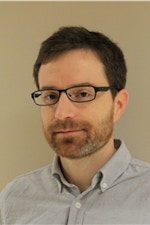Biography
Dr. Hammond studies fundamental processes of meiosis using fungi as model organisms.
Current Courses
495.002Graduate Research In Biological Sciences
299.011Independent Honor Study
499.003Independent Research For The Master's Thesis
499.103Independent Research For The Master's Thesis Last Term
499.203Independent Research For The Master's Thesis Last Term
350.001Molecular Biology
447.001Molecular Biology
420.001Molecular Biology Methods
290.040Research In Biological Sciences
599.003Research In The Biological Sciences
495.001Graduate Research In Biological Sciences
499.003Independent Research For The Master's Thesis
499.103Independent Research For The Master's Thesis Last Term
599.003Research In The Biological Sciences
Teaching Interests & Areas
Genetics, Molecular Biology, Programming for Biologists
Research Interests & Areas
Genome defense processes, Selfish genetic elements, gene drivers
Book, Chapter
Hammond, T., & Keller, N. RNA silencing in the Aspergilli. S. Osmani and G. Goldman (EDs), The Aspergilli: Genomics, Medical Aspects, Biotechnology and Research Methods. CRC Press (2007): 197-210.
McDonald, T., Noordermeer, D., Zhang, Y., Hammond, T., & Keller, N. The ST cluster revisited: Lessons from a genetic model. H. Abbas. (EDs), Aflatoxin and Food Safety. Marcel Dekker, Inc. (2005)
Hall, L., Hammond, T., & Keller, N. Aspergillus nidulans as a model system to study secondary metabolism. J.T. Romeo (EDs), Recent Advances in Phytochemistry volume 38:Secondary Metabolism in Model Systems. Elsevier Ltd. Oxford 38 (2004): 197-222.
Presentations
Recombination-independent recognition of DNA homology for Repeat-Induced Point mutation and meiotic silencing by unpaired DNA. Neurospora 2018. (2018)
Investigating the RNA molecules of meiotic silencing by unpaired DNA (MSUD). 28th Fungal Genetics Conference at Asilomar. Genetics Society of America. (2015)
Sequencing and molecular dissection of Sk-2 in Neurospora. 28th Fungal Genetics Conference at Asilomar. Genetics Society of America. (2015)
Efficient detection of unpaired DNA during meiosis requires a component of the homologous recombination machinery. Neurospora conference 2014. The Fungal Genetics Stock Center. (2014)
Efficient detection of unpaired DNA during meiosis requires a component of the homologous recombination machinery. Neurospora conference 2014. The Fungal Genetics Stock Center. (2014)
Investigating Spore Killer of Fusarium verticillioides. 2014 North Central Division of the American Phytopathological Society. The American Phytopathological Society. (2014)
Investigating a DNA homology search process in the Model Organism Neurospora crassa. 16th Annual DNA Repair Symposium. Wayne State University. (2014)
SAD-6: an SNF2-family protein involved in meiotic silencing by unpaired DNA. 16th Annual DNA Repair Symposium. Wayne State University. (2014)
Searching for a Spore killer: A meiotic drive element in Neurospora fungi. 2014 North Central Division of the American Phytopathological Society. The American Phytopathological Society. (2014)
Grants & Contracts
How do Spore killers kill spores? Elucidating the mechanism of meiotic drive by mRNA editing-mediated spore killing in Neurospora fungi. (Renewal). NSF. Federal. (2020)
MRI: Acquisition of a laser scanning confocal microscope within a core facility for research and training at Illinois State University. National Science Foundation. Federal. (2018)
How do Spore killers kill spores? Elucidating the mechanism of meiotic drive by spore killing in Neurospora fungi.. NSF-MCB. Federal. (2016)
Identifying and characterizing proteins that detect unpaired DNA during meiosis.. NIH. Federal. (2013)
